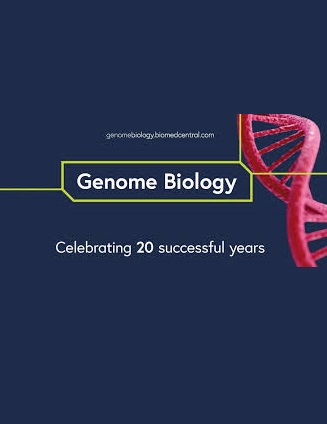STdGCN:利用图卷积网络进行空间转录组细胞类型解卷积
IF 10.1
1区 生物学
Q1 BIOTECHNOLOGY & APPLIED MICROBIOLOGY
引用次数: 0
摘要
空间分辨转录组学将高通量转录组测量与保留的空间细胞组织信息相结合。然而,许多技术无法达到单细胞分辨率。我们提出了 STdGCN,这是一种利用单细胞 RNA 测序(scRNA-seq)作为空间转录组(ST)数据中细胞类型解卷积参考的图模型。STdGCN 结合了 scRNA-seq 的表达谱和 ST 数据的空间定位来进行解卷积。在多个数据集上进行的广泛基准测试表明,STdGCN 优于 17 种最先进的模型。在人类乳腺癌 Visium 数据集中,STdGCN 划分了基质、淋巴细胞和癌细胞,有助于肿瘤微环境分析。在人体心脏 ST 数据中,STdGCN 可识别组织发育过程中内皮细胞-心肌细胞通信的变化。本文章由计算机程序翻译,如有差异,请以英文原文为准。
STdGCN: spatial transcriptomic cell-type deconvolution using graph convolutional networks
Spatially resolved transcriptomics integrates high-throughput transcriptome measurements with preserved spatial cellular organization information. However, many technologies cannot reach single-cell resolution. We present STdGCN, a graph model leveraging single-cell RNA sequencing (scRNA-seq) as reference for cell-type deconvolution in spatial transcriptomic (ST) data. STdGCN incorporates expression profiles from scRNA-seq and spatial localization from ST data for deconvolution. Extensive benchmarking on multiple datasets demonstrates that STdGCN outperforms 17 state-of-the-art models. In a human breast cancer Visium dataset, STdGCN delineates stroma, lymphocytes, and cancer cells, aiding tumor microenvironment analysis. In human heart ST data, STdGCN identifies changes in endothelial-cardiomyocyte communications during tissue development.
求助全文
通过发布文献求助,成功后即可免费获取论文全文。
去求助
来源期刊

Genome Biology
Biochemistry, Genetics and Molecular Biology-Genetics
CiteScore
21.00
自引率
3.30%
发文量
241
审稿时长
2 months
期刊介绍:
Genome Biology stands as a premier platform for exceptional research across all domains of biology and biomedicine, explored through a genomic and post-genomic lens.
With an impressive impact factor of 12.3 (2022),* the journal secures its position as the 3rd-ranked research journal in the Genetics and Heredity category and the 2nd-ranked research journal in the Biotechnology and Applied Microbiology category by Thomson Reuters. Notably, Genome Biology holds the distinction of being the highest-ranked open-access journal in this category.
Our dedicated team of highly trained in-house Editors collaborates closely with our esteemed Editorial Board of international experts, ensuring the journal remains on the forefront of scientific advances and community standards. Regular engagement with researchers at conferences and institute visits underscores our commitment to staying abreast of the latest developments in the field.
 求助内容:
求助内容: 应助结果提醒方式:
应助结果提醒方式:


